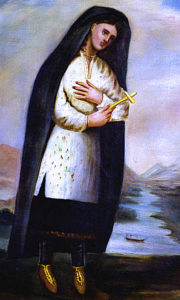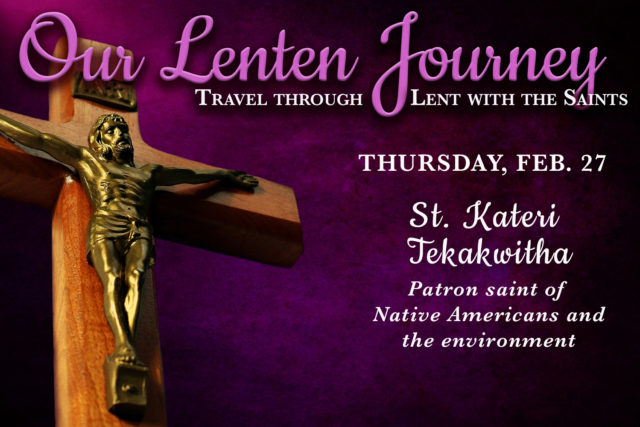St. Kateri Tekakwitha, known as “The Lily of the Mohawks,” is part of the early Catholic history of North America in the 17th century. She was the first Native American to be canonized.
Born to an Algonquin Christian mother and a Mohawk father in Ossernenon, N.Y., Kateri and her family contracted smallpox when she was just 4 years old. She lost her parents and brother to the disease, and was left with health problems, including facial scarring and weakened eyesight from the illness. Her given name, Tekakwitha, means “she who bumps into things,” most likely given to her because of her problems maneuvering with damaged eyesight. Kateri was raised by her uncle, a Mohawk chief, after her parents’ death.

When she was 19, she converted to Catholicism. She was baptized “Kateri,” the Mohawk variation of Catherine, after St. Catherine of Siena. She was subject to suspicion and ridicule in her community because of her faith, so she travelled 200 miles by foot to a join a Christian community near Montreal where she felt more accepted.
According to accounts from Jesuit missionaries, Kateri was very devout, committed to a life of chastity, and practiced self-mortification, including fasting. Her health problems related to the earlier smallpox episode, combined with the practice of fasting, may have led to her early death at age 24 on April 17, 1680.
St. Kateri was canonized in in 2012. Being the first Native American person to become a saint, it naturally follows that she is patron saint of Native Americans. She is also the patron of the environment and ecology. Her feast day is July 14.
For more information on her life, see Franciscan Media’s biography here.
For information on shrines to St. Kateri, click here and here.
For a Novena to St. Kateri, click here.







